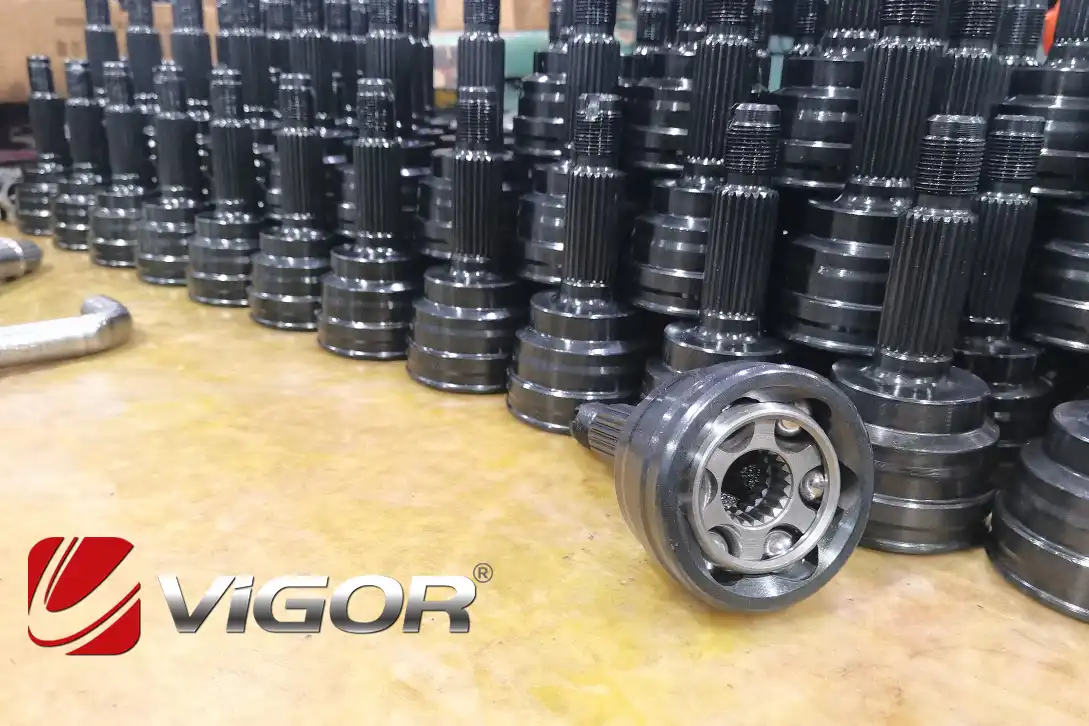
Knowledge
The Effect of Ferrite Ratio on Properties of Constant Velocity Joint Tulip
The ferrite ratio in carbon steel has a significant impact on the performance of automotive ball cage products. Ferrite is a basic microstructure in carbon steel, with a relatively low carbon content and good plasticity and toughness. When ferrite accounts for a relatively high proportion in carbon steel, the material exhibits better plasticity and toughness and is prone to deformation rather than fracture. However, an excessively high proportion of ferrite will lead to a decrease in the hardness and strength of carbon steel, restricting its application in certain high-load or environments requiring wear resistance.
For automotive ball cage products, they need to withstand complex forces and motions from the drive system, so the material's performance is of vital importance. An appropriate amount of ferrite can provide good plasticity and toughness, ensuring that the ball cage is less likely to break when subjected to force and has a longer service life. However, if the proportion of ferrite is too high, it may lead to insufficient hardness and strength of the ball cage, unable to withstand high loads or frequent movements, thereby affecting its performance and reliability.
Therefore, in the production process of automotive ball cage products, the proportion of ferrite in carbon steel needs to be strictly controlled to ensure the performance and quality of the products. The specific proportion should be reasonably adjusted according to the usage environment and performance requirements of the ball cage to achieve the best balance between performance and economy. At the same time, the influence of other alloy elements and impurity elements, as well as the influence of production processes and environmental factors on the material performance, should also be noted.
The methods for adjusting and controlling the ferrite proportion in carbon steel forgings mainly include the following aspects:
1. Adjusting Heat Treatment Process Parameters
By adjusting the heat treatment process parameters, such as heating temperature, holding time and cooling rate, the proportion of ferrite in carbon steel forgings can be effectively controlled. For instance, increasing the heating temperature can promote the formation of austenite, thereby reducing the ferrite content; prolonging the holding time can make the microstructure more uniform, which is beneficial for controlling the proportion of ferrite. Meanwhile, the selection of a cooling rate is also crucial. An excessively fast cooling rate may lead to the generation of quenching cracks, while an excessively slow cooling rate may increase the ferrite content.
2. Alloying Method
By adding appropriate alloying elements such as chromium, nickel, and molybdenum to carbon steel, the microstructure and properties of the steel can be altered, thereby achieving the goal of controlling the proportion of ferrite. These alloying elements can enhance the strength and toughness of carbon steel through methods such as solid solution strengthening and dispersion strengthening while inhibiting the formation of ferrite.
3. Strictly Control the Process Conditions during Forging and Heat Treatment
During the forging and heat treatment processes, the process conditions should be strictly controlled, such as forging temperature, forging ratio, and uniformity of heat treatment furnace temperature, etc., to ensure that the microstructure and properties of carbon steel forgings meet the expected requirements. In addition, monitoring and recording of the forging and heat treatment processes should be strengthened to promptly identify and solve problems.
The methods for adjusting and controlling the ferrite proportion in carbon steel forgings involve multiple aspects, including modifying the heat treatment process parameters, adopting alloying techniques, and strictly controlling the process conditions during forging and heat treatment. In practical operations, these factors should be comprehensively considered based on specific circumstances to achieve the best control effect.
If you have any questions, demand, related parts development or improve your supply chain, please feel free to contact usatinfo@castings-forging.com




